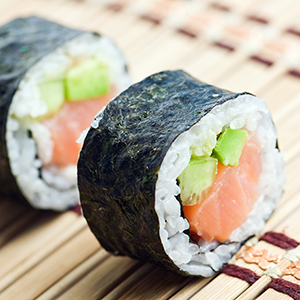Fish: A World of Exotic Flavours

The status of fish has risen and their popularity is growing. The oceans include many varieties of fish, offering us a vast selection of delights to explore. All it takes is the daring to boldly try lesser known types or new recipes.
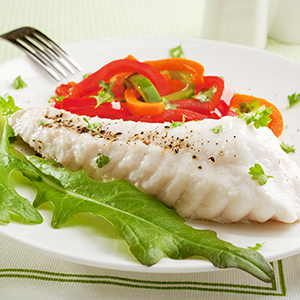
Monkfish
- Monkfish is also called anglerfish because it preys on small fish, luring them with filaments rising from its dorsal fin. Monkfish doesn't evoke the fish's ugly appearance and is the preferred name on menus.
- This fish, found in the Atlantic and the Mediterranean, has lean, firm, succulent, white flesh that takes nicely to most sauces. Many people liken its flavour to lobster and when prepared in the same way, it can be substituted for lobster in most recipes.
- Monkfish has the major advantage: of bone-free flesh as it has only the backbone and no small lateral bones.
- Monkfish can be baked, poached, pan-fried or grilled. Its flesh, which tends to become dry, is enhanced by sauces.
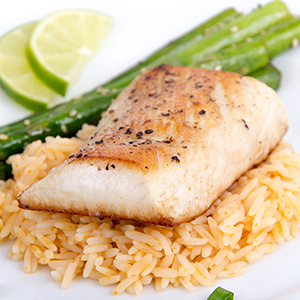
Mahi-mahi
- Found mainly in tropical waters, mahi-mahi is a brilliantly coloured fish that can be up to 2 metres long.
- Mahi-mahi, is the name the Polynesians gave this fish although it is also called dolphinfish or dorado in English. It is sold as steaks, fillets and sometimes whole.
- Its firm, flavourful flesh, varying in colour from white to pink, can be prepared in many ways (grilled, roasted, pan-fried or poached) and is best accompanied with sauce as it has a tendency to be dry.
- This fish is a Tahitian specialty. To enjoy mahi-mahi Tahitian style, dice and marinate it in lime juice and herbs, then serve it with coconut milk.

Tuna
- Tuna is a big, hardy marine fish that can grow up to 2-3 metres long. Given its firmness and flavour, fresh tuna is sometimes called “sea steak”.
- There are various types of tuna. Red tuna, the biggest, has red, strongly flavoured flesh that is excellent for sushi.
- Albacore, sometimes called white tuna, has delicate, whitish flesh that is much prized as is its roe.
- The Skipjack tuna is Dried and flaked, its dark red flesh figures prominently in the Japanese diet.
- Finally, yellowfin tuna is a type of albacore with pale, succulent flesh.
- Tuna is found in warm waters worldwide from the Mediterranean Sea to the Pacific, Atlantic and Indian oceans. Fresh tuna, sold in steaks, fillets and pieces, can be cooked in various ways: grilled, braised, wrapped in foil, in a court-bouillon or steamed and can be substituted for swordfish in most recipes.
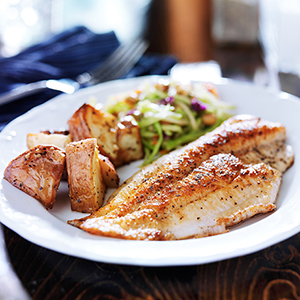
Tilapia
- Tilapia, a freshwater fish native to from Africa, is now farmed in South America and Asia (Vietnam, China, Taiwan etc.). Very resistant to disease, this highly adaptable fish can live in freshwater.
- Wild tilapia is rare these days. It is the second most farmed species. Some 85 countries farm tilapia, making it the sea's equivalent to chicken.
- Tilapia has firm, sweet, delicate, white flesh that keep its shape during cooking.
- It can be prepared in a thousand different ways: poached, braised, grilled or fried. It is also great in fish soup such as the classic bouillabaisse that complement its rich flavour.
- Tilapia is sold whole and in fillets, which are usually deboned. It can replace haddock, cod or Boston bluefish in most recipes.
Enjoying the Sea’s Subtle Flavours
Lemon is a commonplace accompaniment to fish, but other citrus also goes well with these exotic fish. Herbs can enhance them while onions and garlic are often are key to bringing out their full flavour. Hot peppers, ginger or capers add a distinctive note as do coriander, saffron and cumin. Tomatoes, spinach or watercress add juicy goodness.
There is one simple rule to cooking these new fish: do not overcook them. Overcooking makes fish tough and dry. Fish is cooked when its flesh is opaque and no longer translucent.
Select a wine that goes well with the fish. A well-chilled dry white wine is ideal with fried or grilled monkfish or tilapia. A smooth, mellow red could be very nice with tuna while a flowery sauvignon blanc can be paired with exotic lime-ginger mahi-mahi.
Try Sushi
Eye-catching, colourful, and tasty, sushi appeals to touch, smell, sight and taste. Although sushi comes in an almost endless variety, the ingredients are pretty much the same. Salmon, shrimp, tilapia, surimi (crab-flavoured pollock), cucumber, daikon (oriental radish), marinated seaweed, avocado, Japanese omelette and rice combined in various ways to create tasty sushi. Sushi is divided into two large categories: maki and nigiri. Sushi is the generic term that covers both maki et nigiri.
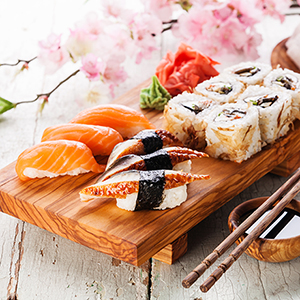
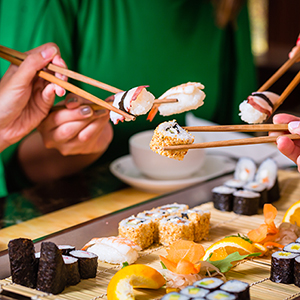
Japanese-Style
As first course or main course, sushi is always popular. When serving sushi as a first course, figure on 4 pieces per guest and on 8-10 when it’s the main course. The usual accompaniments are wasabi (horseradish) and soya sauce. A little wasabi is stirred into the soya sauce to give it a bit of bite. Then, depending on their dexterity guests can use chopsticks or fingers to dip the sushi in the sauce and enjoy a Japanese dining experience. Munching a sliver of marinated ginger between bites helps clean the palate between bites so that the subtle variations in flavour of the various sushi can be better appreciated. The obvious accompaniment is hot sake although a good white wine is also an excellent choice.
Maki are sliced seaweed-wrapped rice rolls that contain, depending on the variety, a mix of fish, seafood and/or vegetables. Nigiri are strips of fish over rice.
Exotic and Fresh
For maximum freshness and taste, sushi should be eaten the day of purchase. They are good however until the best before date on the package. Take the sushi out of the refrigerator 30 minutes before serving them to allow their subtle flavours to develop. Cover them with plastic wrap to prevent the rice from drying out. Your Metro fishmonger will be happy to explain how to tell the different varieties of sushi apart.
Nutritional Value
Tuna generally contains 4 to 6% fat and is considered a semi-fatty fish. It is very rich in vitamins A, D and B12 and in omega-3 fatty acids, which improve circulation thus helping to prevent heart disease. According to various studies, eating omega-3 rich fish (herring, mackerel, salmon, sardines) 2-3 times a week reduces the risk of blood clots and heart disease.
Monkfish, tilapia and mahi-mahi are all considered lean fish. Monkfish is one of the leanest however with less than 1% of lipids. Other lean fish are cod, sole and haddock.
